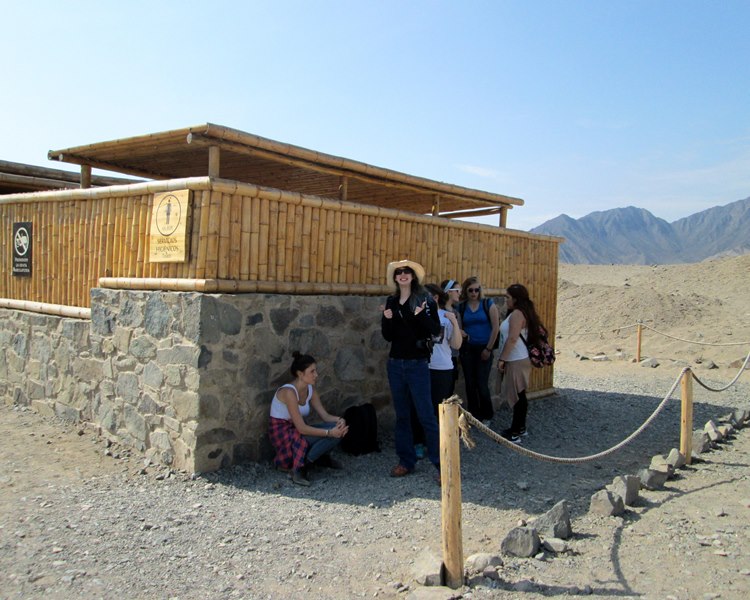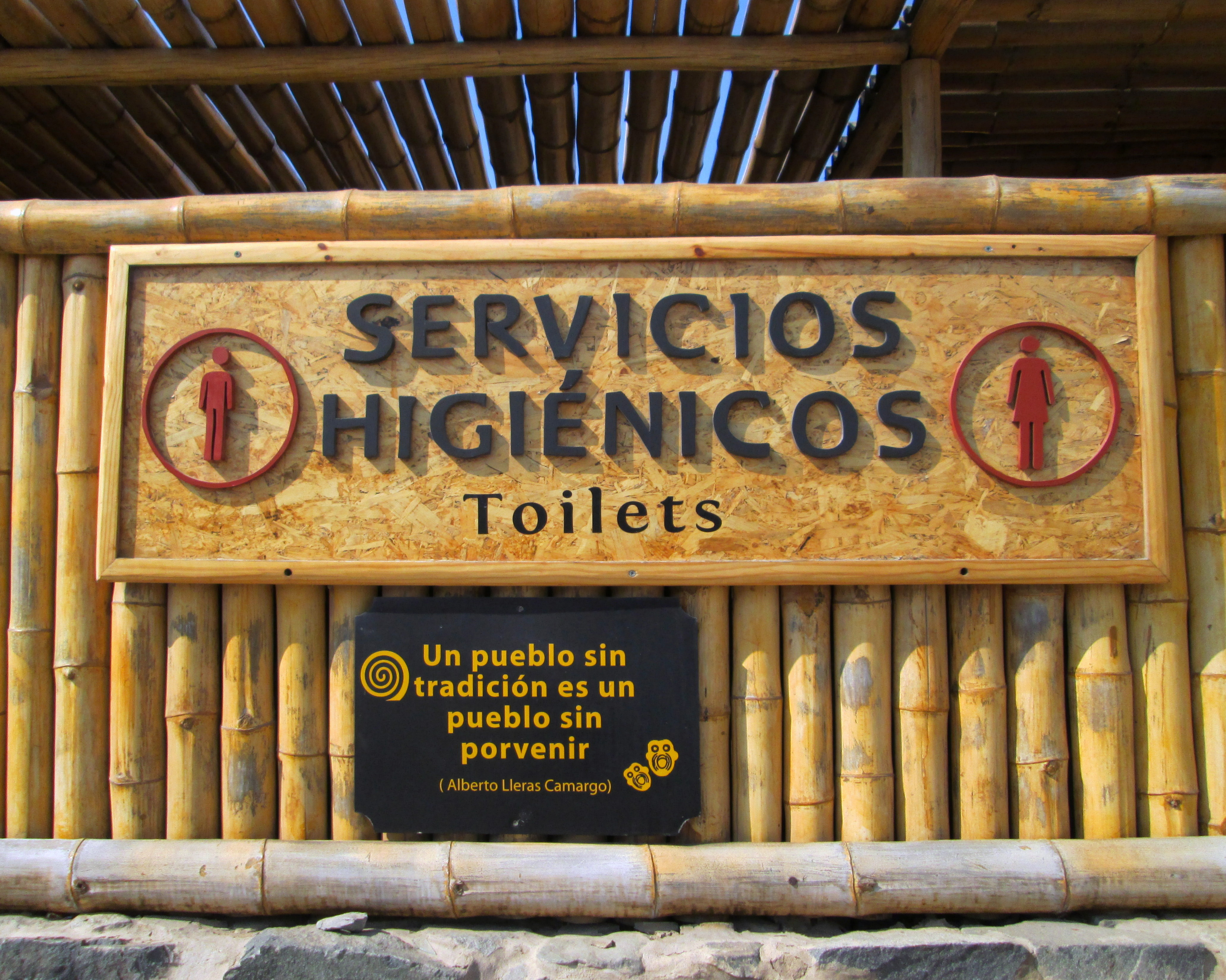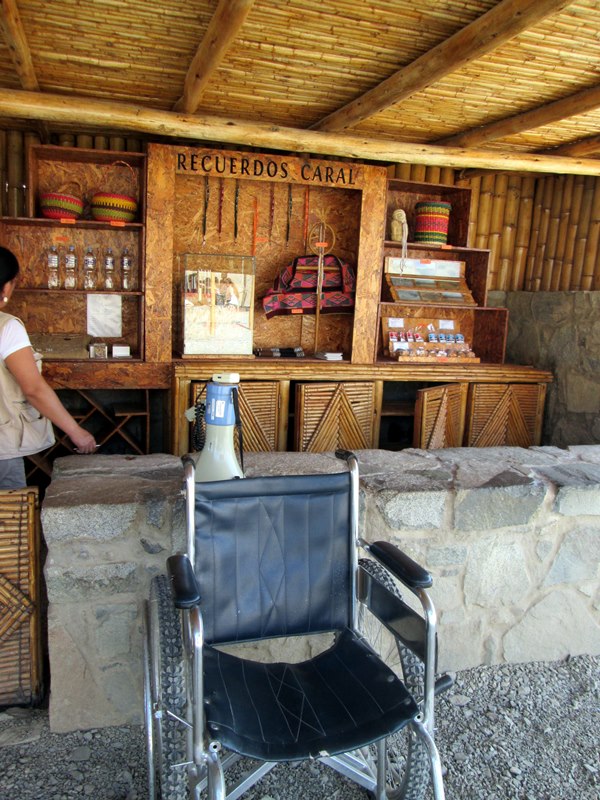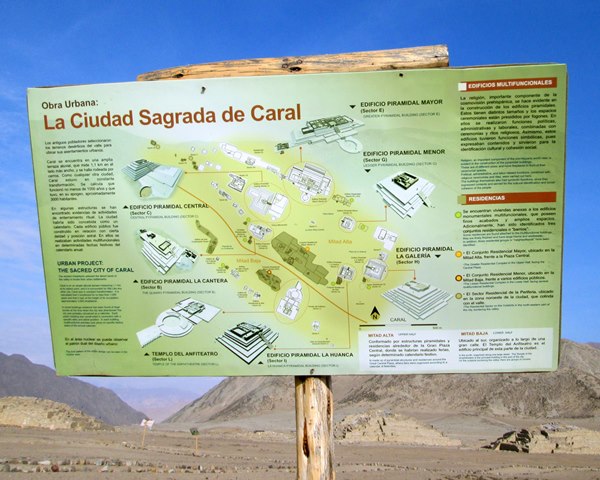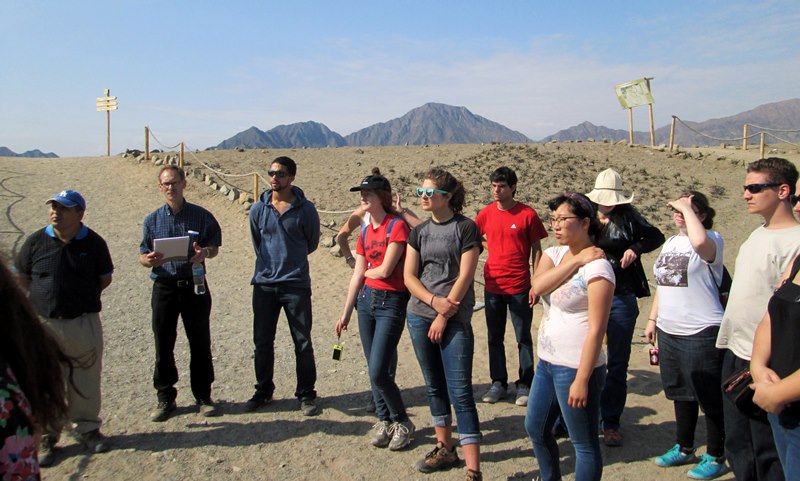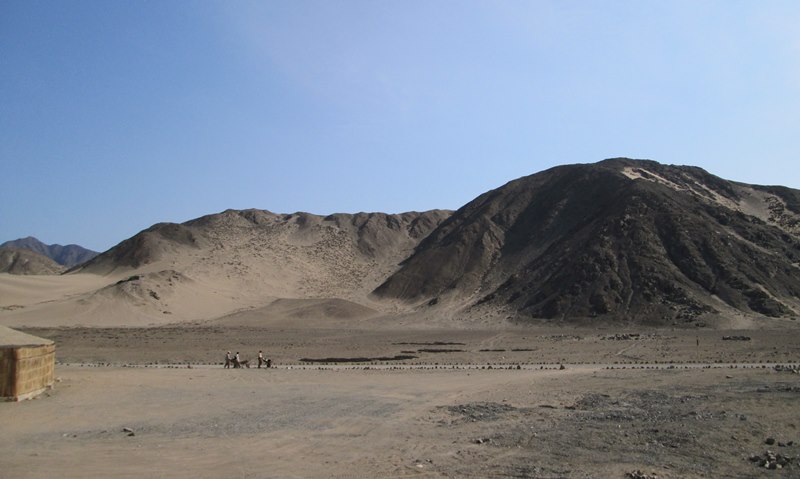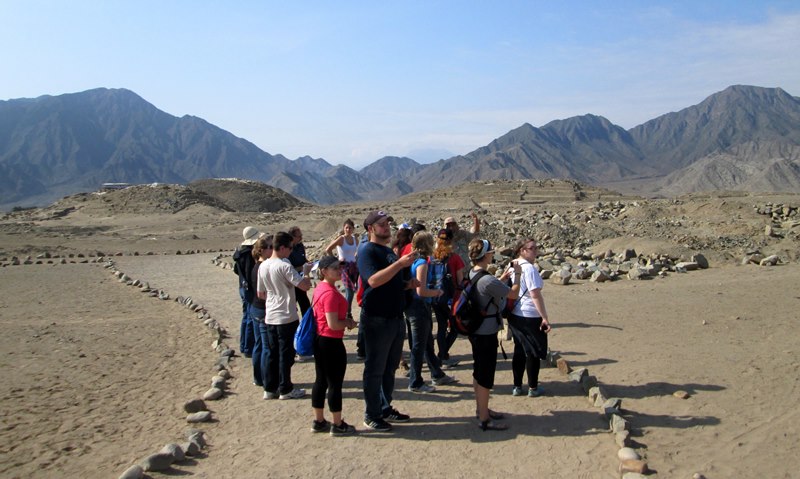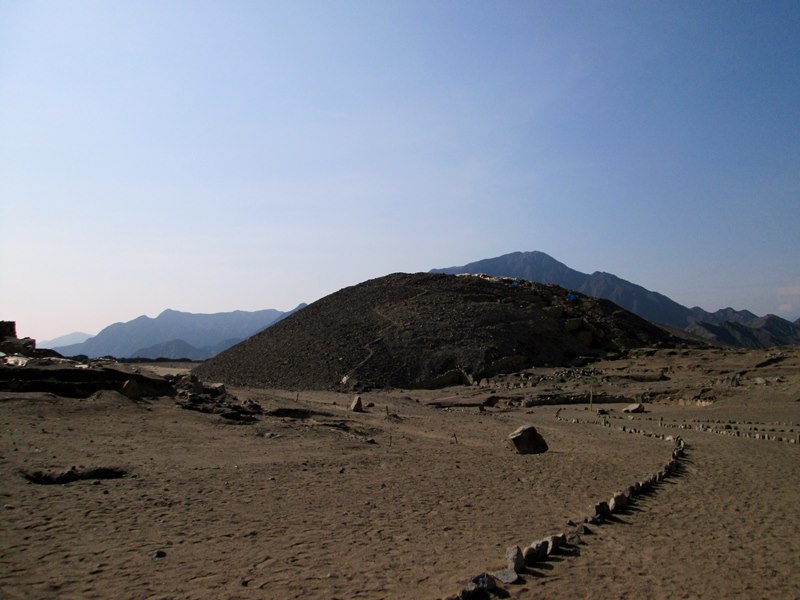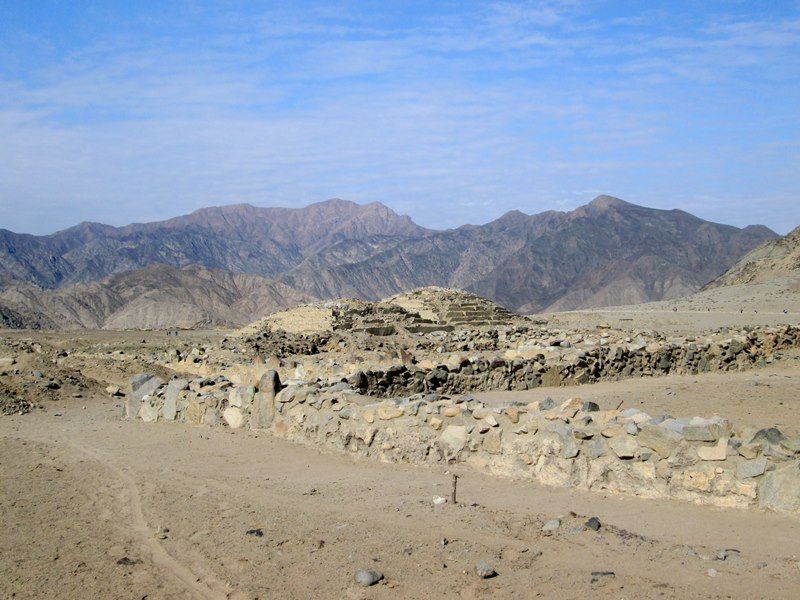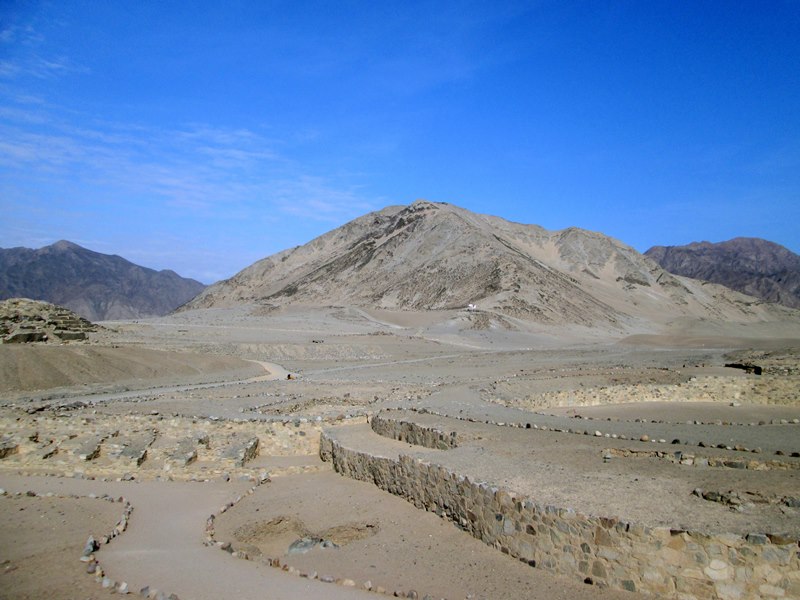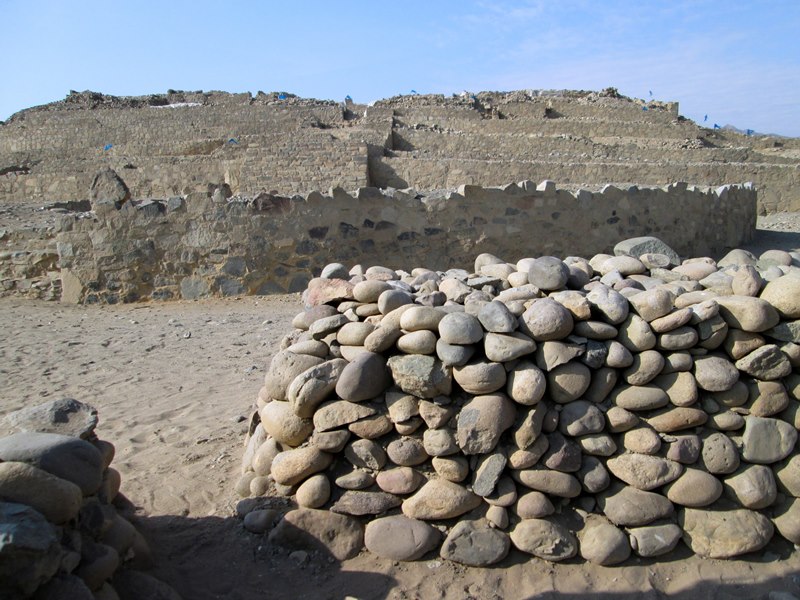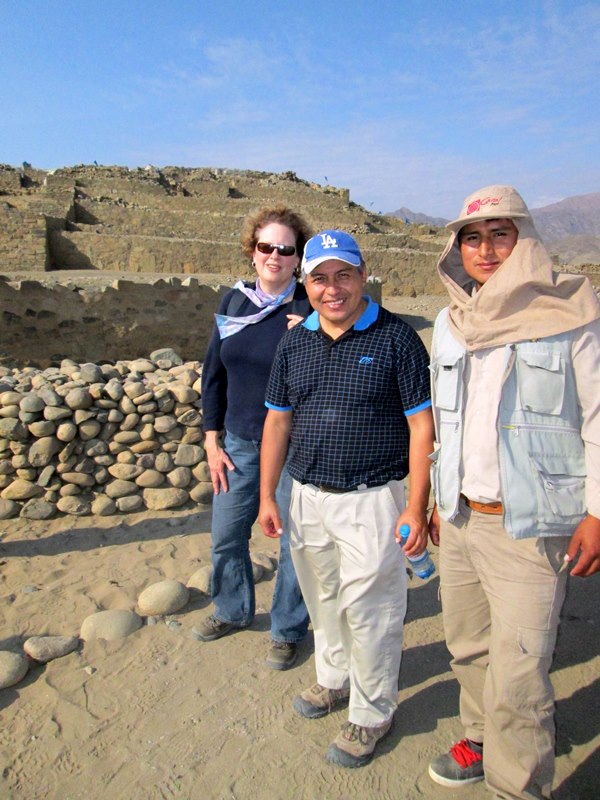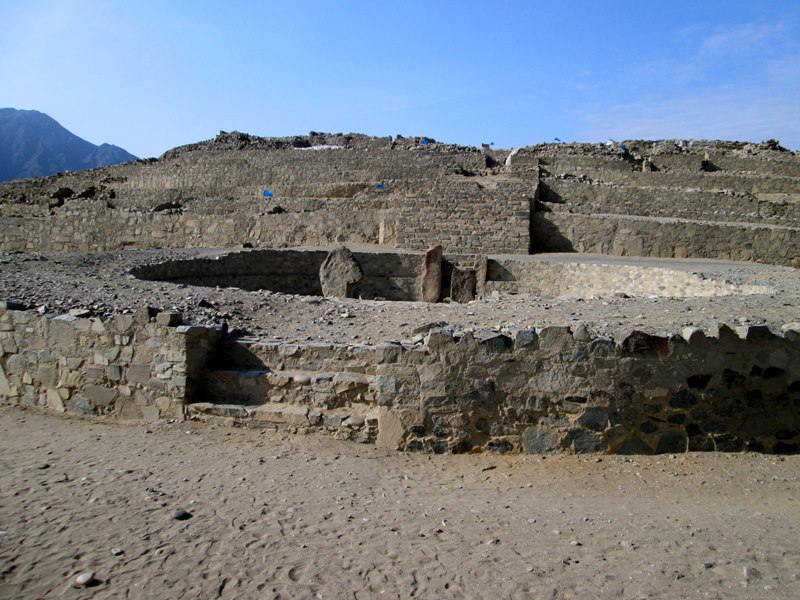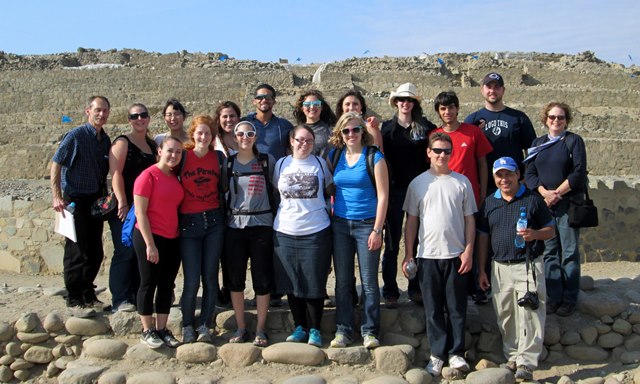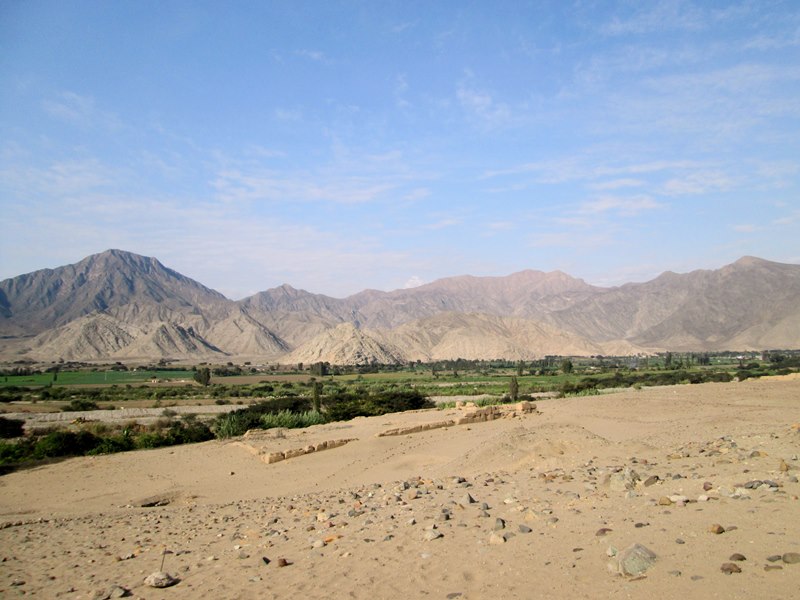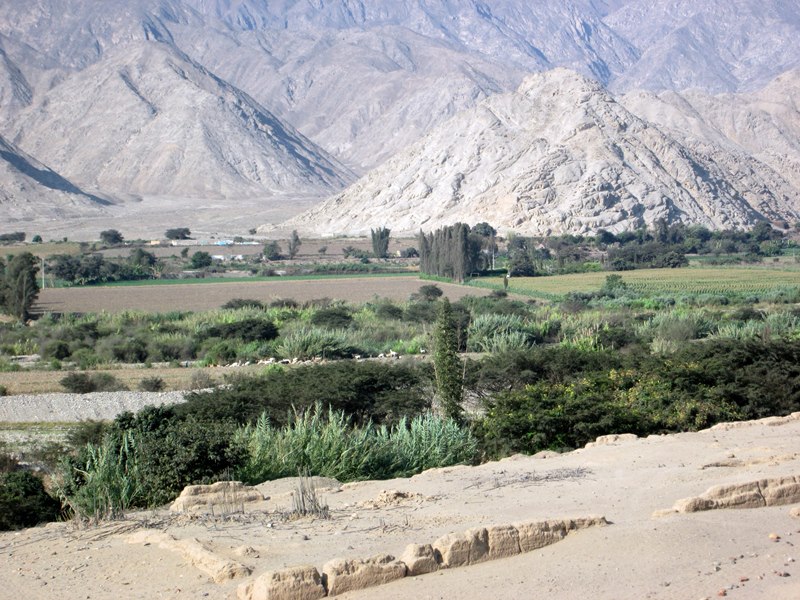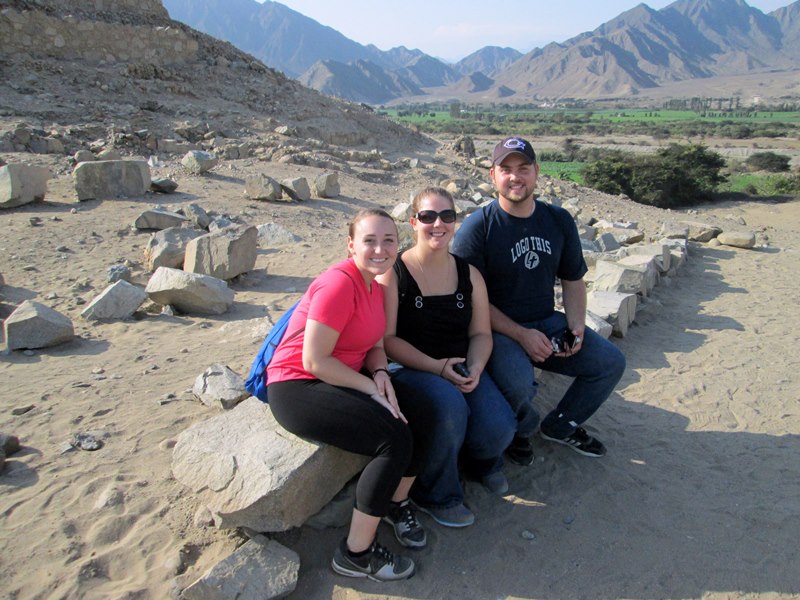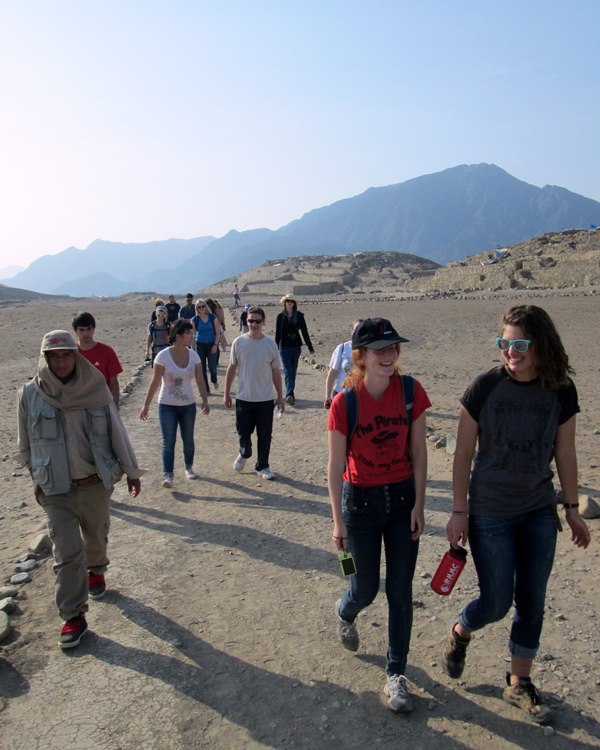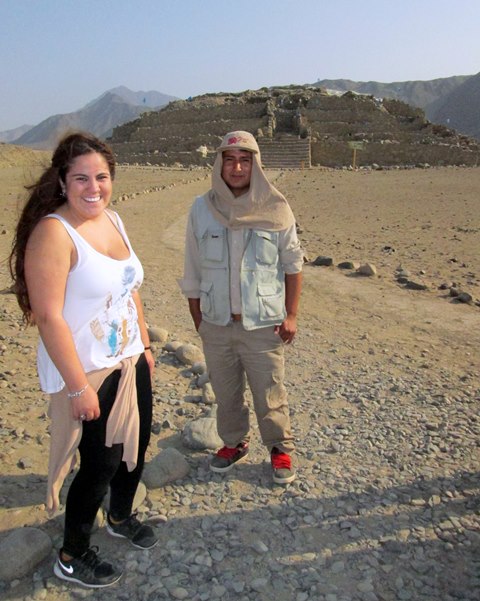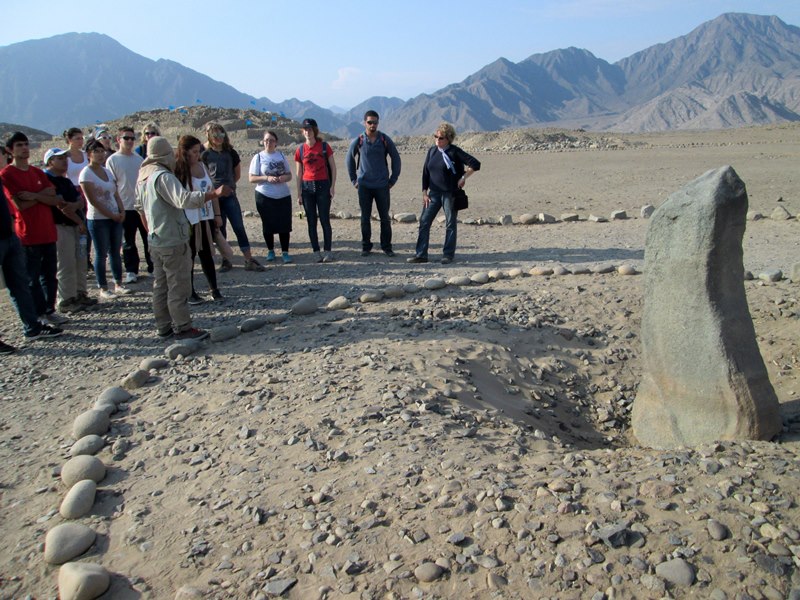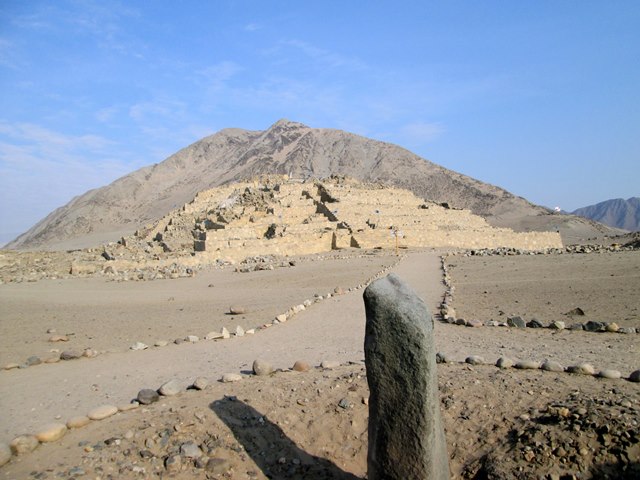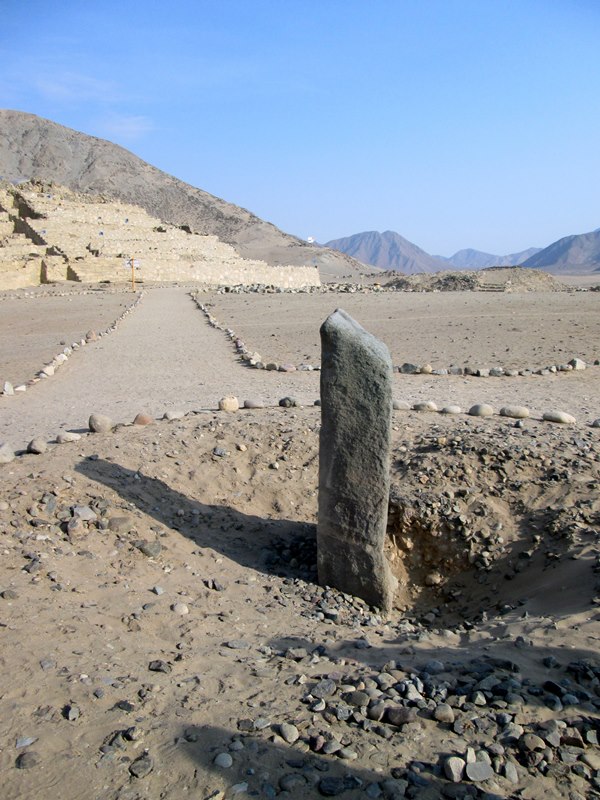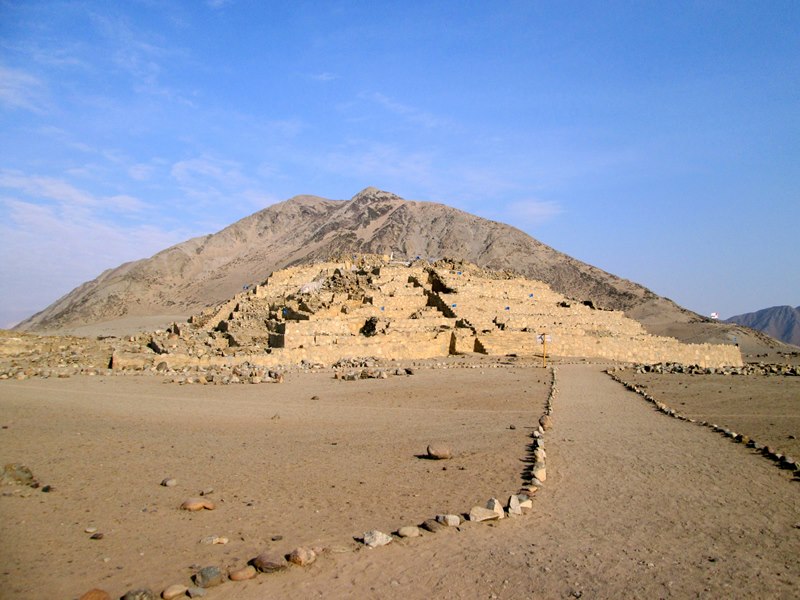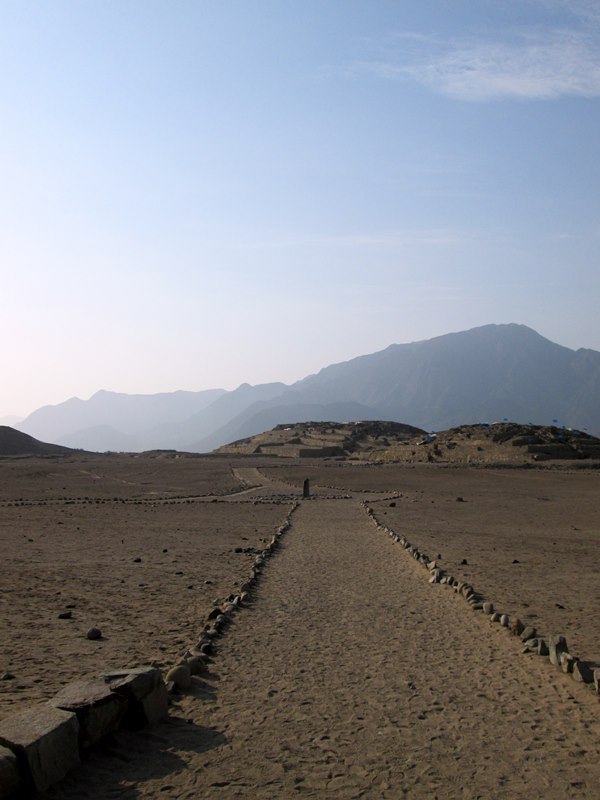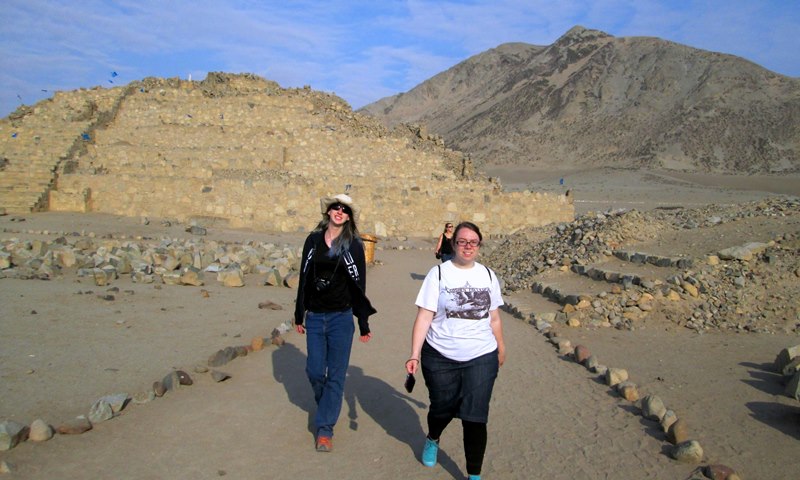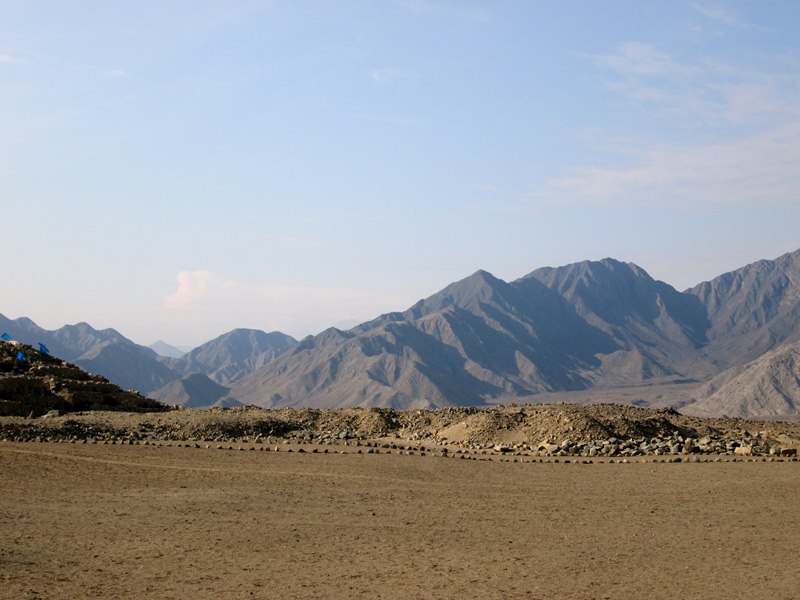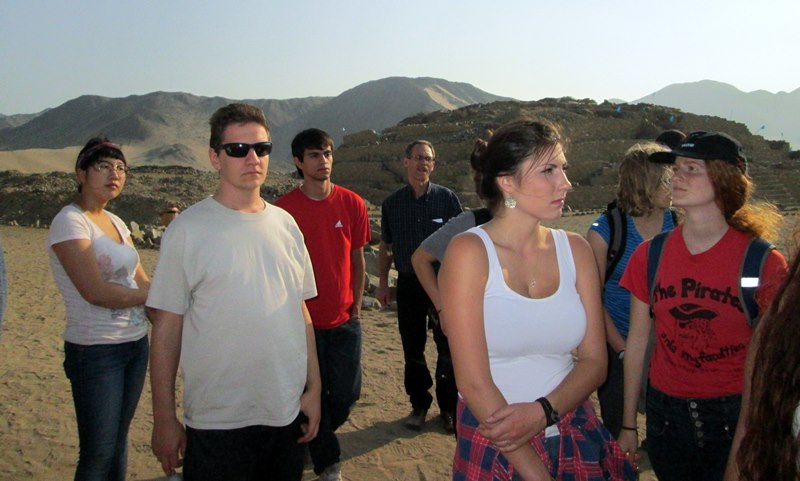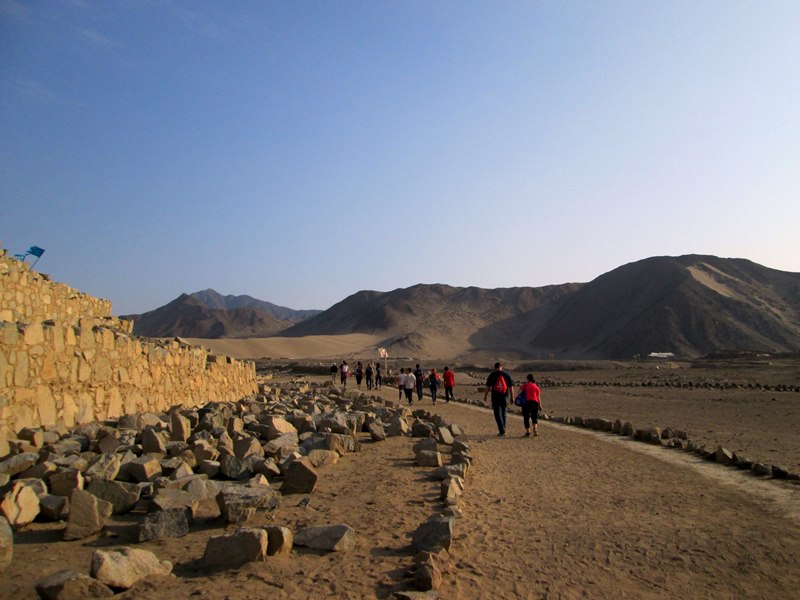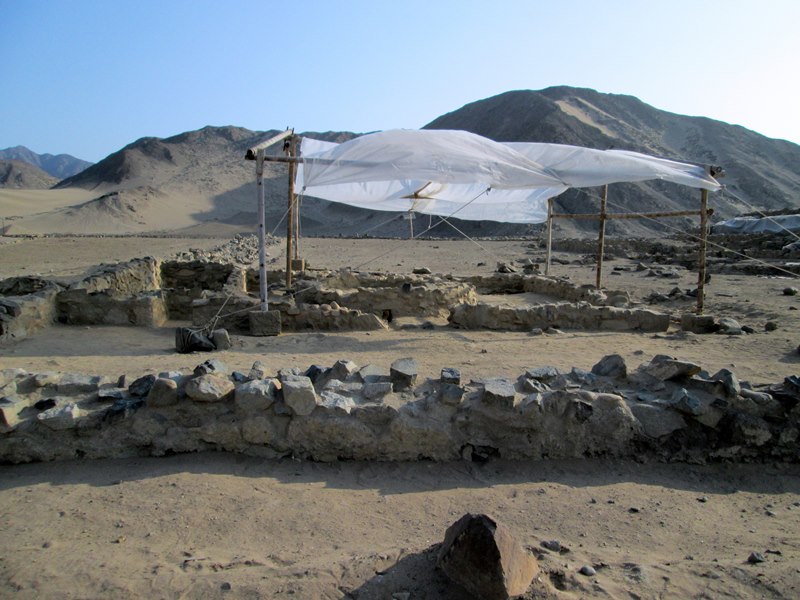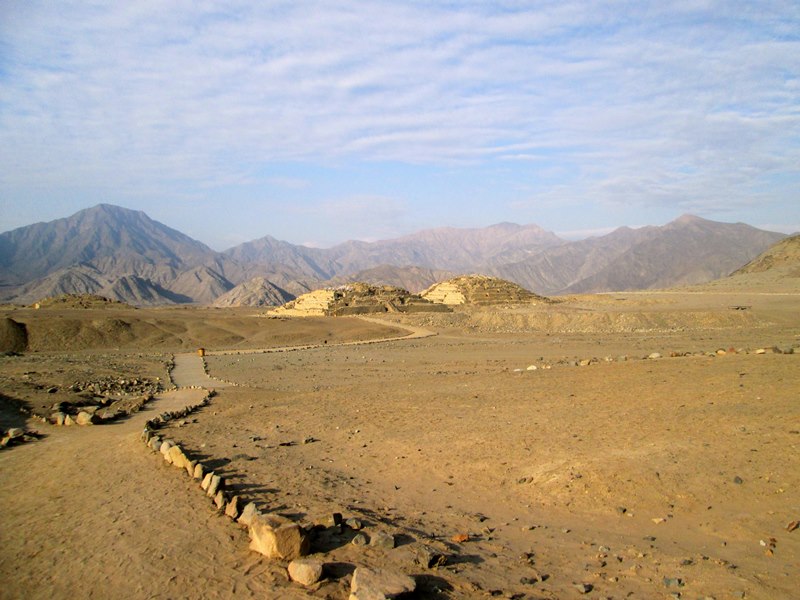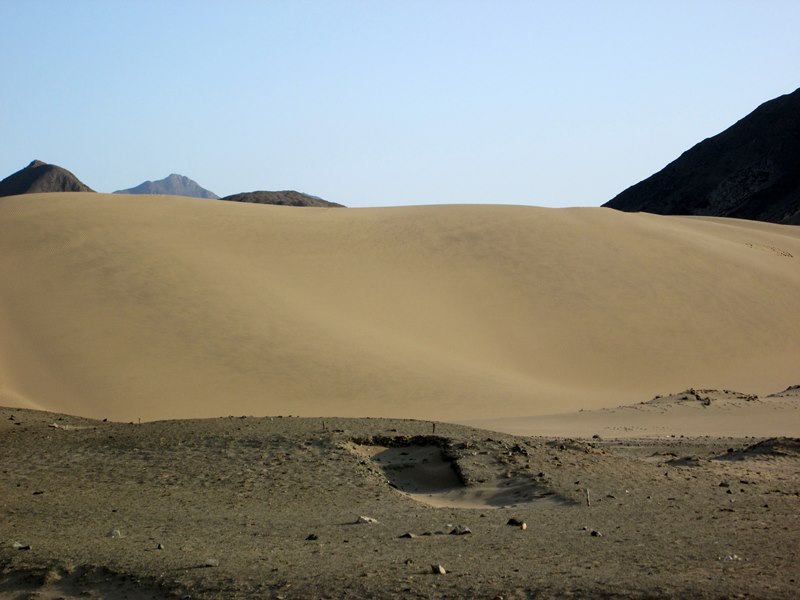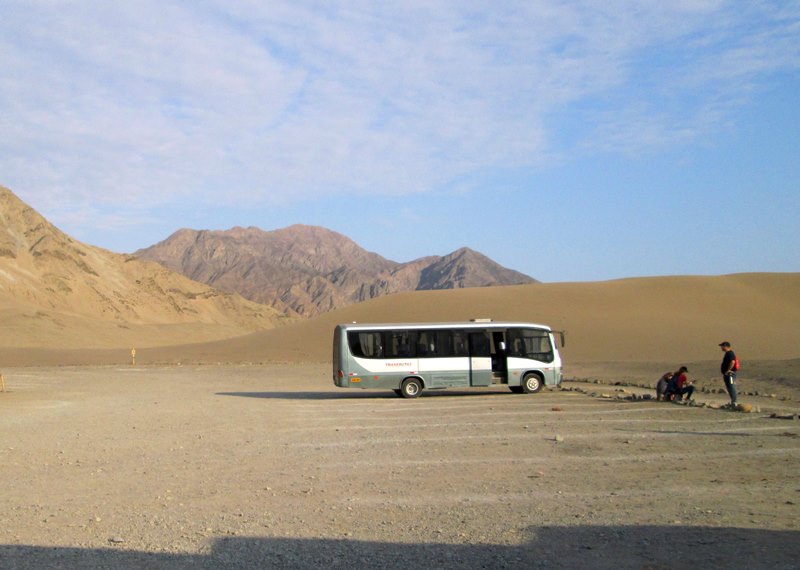Walking the Oldest City of the Americas
We drove away from Lima on Friday, headed north on a highway that hugs the coastline, the Pacific to our left and steeply banked sand dunes to our right. The sun came out, a welcome change from Lima, which is still nearly always covered in clouds late in the winter season. After about 120 miles, we turned inland, following a dirt road.
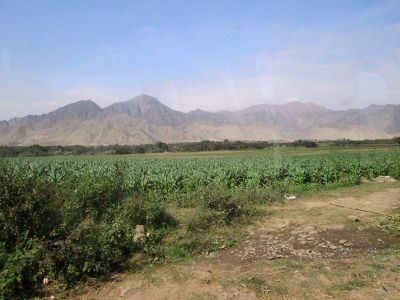
We drove past fields of corn and asparagus and peppers, all watered by irrigation. We passed a couple of three-wheeled, moto-taxis. We saw a sign welcoming us to “Pueblo Nuevo,” or “New Town,” apparently so named for a couple of small, single-story houses.
We were looking for signs to Caral. We were headed to one of the most celebrated archaeological sites in the world, Caral, the oldest city in the Americas, which flourished for more than five centuries, beginning around 2600 B.C. We knew we were getting close, but still our driver had to stop twice to ask directions.
For all of its archaeological allure — we watched a BBC documentary earlier in the week, which described a civilization as old as the pyramids of Egypt, and where the absence of weapons and the presence of pyramids and canals suggests a highly structured society devoted to peace — Caral is a work in progress, reached by dirt roads, kept company by humble neighbors.
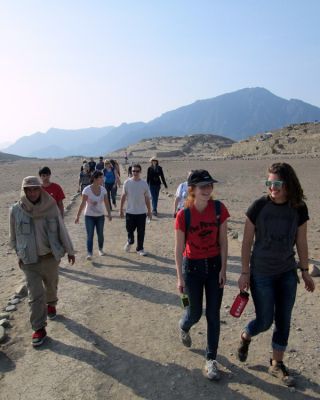
We felt fortunate to be able to tour the site without throngs of tourists, as will surely be the case in three weeks when we visit Machu Picchu. A group of school children in uniform was leaving as we arrived. For the next couple of hours, in the company of a guide, Fernando, we walked among the excavated ruins, having Caral to ourselves.
Fernando told us that the excavation of Caral, which began in 1994, has uncovered 9 pyramids and 32 homes. The pyramids were made of stone and a mud sealant from a nearby river (bone dry this time of year). The largest pyramid is about 60 feet high, with a base that covers an area the size of four football fields. At a place known as the Amphitheater Temple we heard that 32 flutes had been found, signs of a people who prized music.
Our tour ended at closing time. The vendors who sell souvenirs were putting away their goods even as we were making purchases.
The sun was going down at 5 as we boarded the bus. Already it was clear that the best photos were still to be taken. Maybe some day a group of Goshen students will be able to spend the night in a hostel at Caral, enjoying the desert coolness and waking up early to take photos of the sunrise.
Then, as we began to drive away, we discovered a chain drawn tight across the most comfortable of two access roads to the site — and no one around to unlock it for us. So we took the alternative route, which required some skillful moves by our bus driver, including one place where he had to power through a creek, part of the admission price for visiting this site on the World Heritage List of the United Nations.
Photos and captions by Karen Stoltzfus
